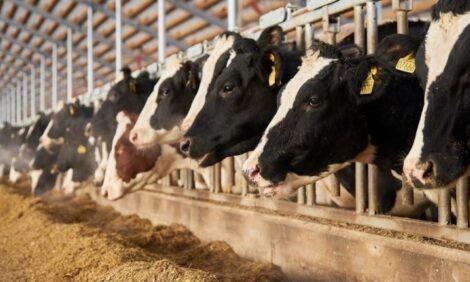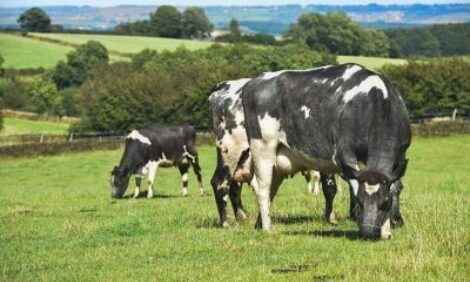



Steps to Ensure Calf Success This Winter
Temperatures have plummeted and it is now time to maximise everything the calf gets to keep dietary fat and energy high.This is according to Karen Anderson, University of Minnesota Extension Educator, who writes that winter weather means more work and preparation.
Feeding strategies for winter months include:
- Consistency, consistency, consistency: Calves expect consistency when it comes to feeding. Calves should be fed the same volume, the same amount of solids, the same time of day and at the same temperature at every feeding.
- Fat content: Due to the fact that calves are born with very little fat on their bodies, calves should receive a ration containing at least 20per cent fat.
- Feeding times: In order to increase the feed intake of calves, the number of times fed or the amount fed may need to be adjusted. For example, increase the number of feedings per day from two to three while keeping the amount fed per calf the same. Or continue feeding the calves twice per day; however, increase the amount fed from 2 to 3 quarts per feeding.
- Starter: Always have high quality, free choice starter available for calves to utilize for additional energy and to aid in rumen development.
- Consider colostrum cubes: By freezing colostrum from a rota/corona-vaccinated cow into an ice cube tray (using non-stick cooking spray), additional immunoglobins can be provided to the calf to help prevent bacteria from penetrating the gut. Just add two cubes per calf per feeding into their bottle or pail of milk.
- Water: All feedings and water available should be served at a calf's normal body temperature of 101.5°F. The reason for this is that if feedings and water are not served at body temperature, the calf must utilize additional energy to warm the feedings and water to 101.5°F.
- Electrolytes: Have electrolytes on hand to help prevent the calf from getting dehydrated when ill.
Additional housing strategies for proper calf care and well-being during winter months include:
- Birth: All year round, following the appropriate calving protocols is essential for the health of both the cow and calf. More specifically to winter, calves should be kept clean, dry and warm in the first two hours after birth and then moved to a calf hutch or cold housing. Calf jackets are also helpful to keep calves warm during winter. Calf jackets should be laundered regularly especially between calves.
- Bedding: Calves should be provided a clean and dry place to live, which is deep and allows calves to nestle down into bedding to reduce body heat loss. A suggestion is to take some time to observe the living conditions of your calves for yourself. If you can't kneel in a calf's pen for 15 seconds without having damp knees, additional cleaning or bedding is necessary.
- Ventilation: Provide appropriate, draft-free ventilation.
Taking steps to maintain health, growth, and well-being of calves is essential for the future of our dairy operations. Utilize these feeding and housing strategies for fighting the effects of cold stress when raising pre-wean calves during this winter season.
Adequate and Consistent Care for Each and Every Calf
Don't let calf care take a back seat during the up and coming cold weather, writes Mrs Anderson.
Calves are the future of the dairy farm, and it is essential for future success to provide adequate and consistent care for each and every calf, she adds.
Included in this article are several feeding and housing strategies to consider when raising pre-wean calves during this winter season.
I used some additional insight about calf care and well-being from Drs. Noah Litherland (Dairy Youngstock Technical Specialist with Vita Plus) and Maurice Eastridge (Professor and Extension Dairy Specialist, The Ohio State University) when writing this article.
Look at each calf on an individual basis - what signs do you see that something is not quite right with that calf?
Depending on age, calves experience cold stress at different temperatures. The critical temperature for newborn calves is 48°F versus 32°F for older calves. When cold stress takes effect on calves, there is an increase in the calf's energy requirement for maintenance.
Cold stress causes calves to divert energy away from growth and immune function to fight the effects of being cold. Additional energy must be added to the ration as well as housing strategies must be used to help combat the effects of cold stress and as a result maintain a calf's desired growth rate of 1.5 pounds per day.



